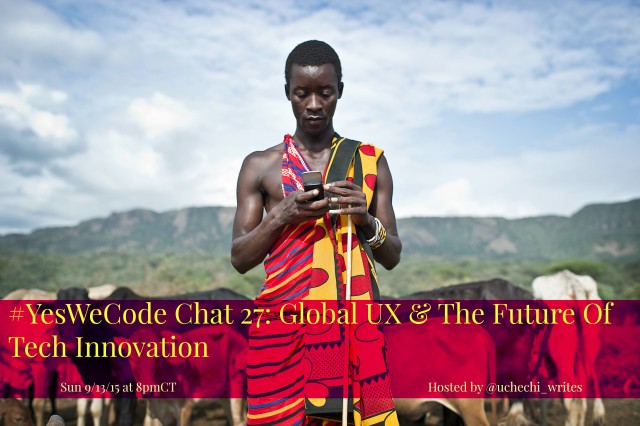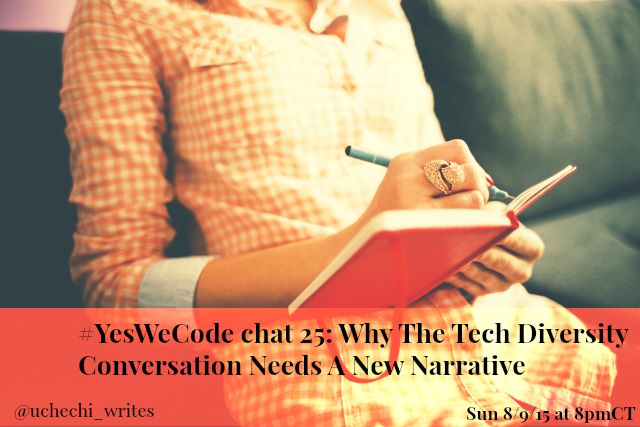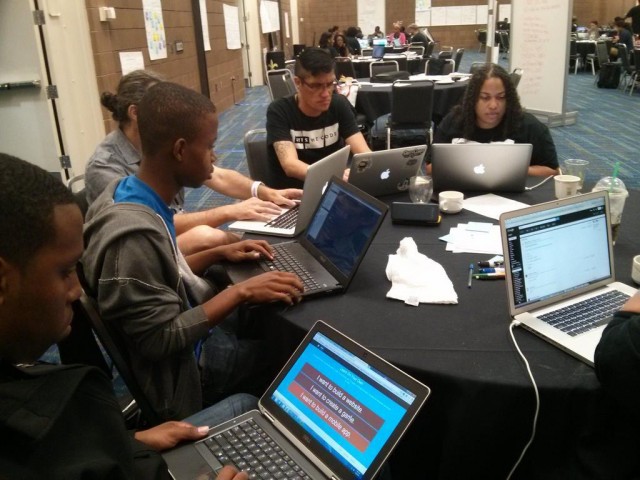
by Uchechi | Sep 12, 2015 | Blog
This week, Apple announced the new iPhone release for later this month. Around the world, customers will line up in Mexico City, Lagos, Lisbon and Manila to purchase Apples latest artistic release.In a world that has more mobile phones than toilets, it’s clear that global ad diverse customers make our products more profitable and valuable.
Isn’t it time we represent our world not just as consumers, but also as creators?
As tech innovators, how do we create user experiences that factor in the needs, desires and worldviews of global population?
Do we have a responsibility to innovate with a focus on global user experiences?
I think we do! As a UX Designer, I’m always thinking about how my Nigerian, American, Swedish, Mexican and Jewish family engages with the products I create.
How do I factor them into my design process?
The conversation about diversity in technology often centers around bringing diverse ideas to the table for the sake of inclusion, but the need for inclusion goes beyond fairness and equality. It also allows for better user experience, better design and more innovative products.
Stepping outside our comfort zone is not only necessary for self growth, it’s also good (no great) for business. The future of technology will focus on creating products for the more than 7 billion people in the world (4.5 billion have mobile technology) who look like less like the 19 year old white male Stanford grad and more like a kaleidoscope of ethnicities, languages and cultural contexts.
We are the answer to the question, “who will be best positioned to come up with products and services that will win in the global market.”
I think it’s time we make sure global centered UX is at the core of our tech diversity conversations and design innovation.
Questions to think about:
- What does global UX mean to you?
- Do you practice it?
- How has it impacted your design experience and perspective?
- As consumers, how would global centered design impact your user experience of a product?
- As creators, do we have a responsibility to “think globally?”
- As outsiders, do people of color have an advantage in the global market of tech products?
- If so how can we promote that?

by Uchechi | Aug 5, 2015 | Blog
#YesWeCode chat #25: Why The Tech Diversity Conversation Needs A New Narrative
Sunday 8/9/15
6pmPT/8pmCT/9pmEST
Two recent events influenced this Yes We Code chat topic. Last weekend was James Baldwin’s birthday and I celebrated by writing about the lessons I learned from him, and his take on how to go after what you want and actually get it. In his historic “Rap on Race” conversation with Margaret Mead, he talks about how he needed to “change the narrative” of what was expected for his life in order to change his life.
During #YesWeCode chat #24, we discussed the assumption/expectation of minority startup founders to create businesses focused on social good. While that wasn’t every founders experience and we didn’t come up with an answer, we did conclude that maybe we need to rethink how we view the following conversations within the tech diversity:
- Social good can also be profitable.
- Minority entrepreneurs can create companies that are profitable.
- The solution towards more tech diversity isn’t about one solution, but addressing the whole pipeline.
What if the way to really achieve tech diversity is to change the internal and external narratives we tell ourselves about what that means and what it will take? What if in order to engage this topic we need to know and understand the real underlying issues and concerns?What if we refuse to accept that lack of minority CS majors is at the heart of the lack of diversity in tech? What if we choose to rethink the expectations and assumptions we put on ourselves? What if, in the end, we need to “change the narrative” we’ve either created or accepted about what’s possible in the greater tech diversity conversation.
This Sunday, we’ll talk about this and more.
Questions to think about:
1. Is there a consistent tech diversity narrative?
2. What does it say?
3. What assumptions about tech diversity impact how you see yourself and your work?
4. If there are many tech diversity narratives, which ones do you think we need to change? Why?
5. How can we create a new narrative that includes the needs of youth, entrepreneurs and tech startup entrepreneurs?
New to the #yeswecode chat? Check out the guidelines to help you make the most of it!

by Uchechi | Jun 14, 2015 | Blog, creativity
I didn’t major in CS
I didn’t go to UX design school. I don’t think it even existed when I graduated from college in 2001. While I didn’t know anything about user experience design, I did know that I was interested in human behavior and interactions. User Experience Designers come from all different majors and backgrounds.I thought I’d major in Environmental Science. I loved learning how things worked, especially in the environment.During the spring of my freshman year, I took a poetry class that would eventually lead me to a career in technology.
Poetry Taught Me To Love Creativity and Language
I know this doesn’t sound like a predictable path, but it came out of going for something that ignited my curiosity, and led me to a career I didn’t even know I’d want to pursue.I was lucky to be mentored by the late poet June Jordan. She was one of the most published black writers in US history and I found a resonance in our stories. She encouraged me to express myself, to take risks, to get on stage even when my nerves were fried and my poems were drenched in my own fear. She made it valuable to take risks for something important, which was finding and owning my voice.
It was UX love at first wireframe
Years later, I found myself with a career as a professional poet, teacher and online copywriter. I’d spend weekends performing at conferences, jails, schools and more. What I loved most about this work was that it made me engage with my audience in a way that brought us all closer together. I’d write a range of content and was always aware of the language I used and the emotions conveyed based on the words I chose.I loved how language had an impact and could affect how we felt about anything. I learned to be intentional with my language and to use it wisely to convey exactly what I wanted to say.
User Experience Design Was Similar to Poetry
Online copywriting led me to discover UX, and it was love at first wireframe. Something about User Experience felt familiar.
- I got to have a voice and to use it.
- I could create something that allowed me to engage with my audience of users.
- It allowed me to be intentional about language and to not waste words.
- I had to think about who my audience was, and create experiences they could connect to.
- My platform was no longer a stage, but was now online. The world could connect. The world became my users.
- I could still be very creative and use writing as a tool.
- UX was also all about great copy, and I loved writing great copy to create great experiences. I was in tech heaven.
Want to know how to get into a tech career?
Start with finding your voice
If you’re headed to college, everyone will want to give you advice about what you should major in. You don’t know me and you might not want my advice, so I’ll tell you what I believe instead. I believe true creativity is rooted in any discipline that allows you to find a voice and to believe that your voice matters. Once you find that, you can express it in several ways (poetry, fine art, technology), but you have to trust that your perspective has value.
Suggested Classes To Take (You can do these now, even if you’re not in college anymore):
- Take classes that help you find your voice. Theater and creative writing classes are great for this.
- Take classes that reinforce the idea that mistakes are okay, and sometimes your best way of learning. Art classes are great for this.
- Take classes that encourage you to get up and share your perspective. Often in UX, you end up working in teams and need to be able to explain your ideas to others. Public speaking classes are great for this.
- Do something that allows you to take risks. Reading a poem during open mic night at your local bar is a great way to do this.
- Take classes in Architecture, which allows you to understand structural planning, which will help you in User Experience Design.[“Tweet “Creativity is rooted in the belief that you have a voice and that your voice matters enough to share it with the world.”]
Conclusion:
As a tech entrepreneur, I often get asked how I found this career path. My first response is usually something like this: “No, I didn’t major in CS, but I did study creative writing and education.” I was obsessed with language, perspectives and what it meant to have a voice and to trust that voice. It was trusting that voice that led me to love language enough to pursue a writing career, which led to online copywriting and then to UX. The skills I learned as a poet have also applied to my UX career. If you want to know how to get into tech, my advice is to find your creativity by finding your voice.How did you get into tech? How did you find your way to teI’d love to know your story. Hit me up in the comments!

by Uchechi | May 15, 2015 | Blog
#YesWeCode chat 20: Developing Your Tech Craft
Sunday May 17th, 2015
6pmPST/8pmCT
Historically, the idea of developing and honing ones craft has been left to artists. Painters, writers and sculptors spend their whole lives practicing, evolving and changing how they do things to make their technique better and to serve their artistic creativity.
As a poet and UX Designer, I believe technologists are no different. We’re the modern creatives, and instead of using brushes we’ve got wireframes, Google Fonts and CSS. But, are we improving our technique and changing how we do things to serve our work in tech? Or, are we just focused on getting a few skills down so we can find the next coding, design or blogging gig.
Acknowledging that our creativity in technology is our craft is important because it allows us to see what we do as a life long journey and not just our next destination.
During the next #yeswecode chat, we’ll talk about how to develop your craft into lifelong skills that you can use at any job.
Questions to think about:
- How does your “work” influence industries outside technology?
- When you think about “developing your craft”, what does that mean to you?
- What practices do you have in place to make sure your craft evolves over time?
- What can we learn from how artists develop their craft? How can we apply it to tech?
- Given that the tools, the practices, even the materials of our craft change daily, how can we maintain a center?
- Artists have clear identities, styles. Do we? Should we? If so, in what ways? If not, why not?
- How does your personal identity inform your craft?
See you on Twitter!
New to the #yeswecode chat? Check out the guidelines to help you make the most out of it!

by Uchechi | Oct 24, 2014 | Blog
#YesWeCode Twitter chat guidelines
Thanks for showing up for the #yeswecode Twitter chat, which happens every 2 weeks at 8pm Central Time. I’m excited to talk to everyone and to have you share your experiences . I started this chat a few days before the #yeswecode hackathon in New Orleans because I was participating as a mentor (and local partner via my startup) and wanted to engage the global tech community online before the in person event. I also wanted to hear what others had to say about what diversity in tech meant to them and how we could use social media to engage in meaningful dialogue.
Focus on solutions: By now, we’ve all heard the statistics about the lack of diversity in the tech industry. The questions we’re now asking are: What can be done about it? What’s already being done? Why is it so important? Where do we start? I know that sometimes talking about it get tiring. I know that we all want solutions, stat! This chat aims to answer some of these questions, create engaging dialogue and focus on solutions.
What “diversity in tech” means & why it’s key to innovation: When I say diversity, this is what I mean all of us. Yes, all of us. My family is Nigerian, American, Jewish, Swedish and Mexican. It means each and every one of us. It also means diverse tech skills (it’s not just about coding) and age diversity. It also means gender and sexual orientation. I do believe that your worldview is shaped by all of these things and positively impacts how you approach problem solving. And, innovation is about problem solving.
Rules:
It’s not easy to talk about race, gender, inequality, age, sexuality, etc, and how we all feel about it. After all, being vulnerable can be very scary. It takes trust, faith and the desire to have the difficult conversations that often lead to change. In order to do that, we need some groundrules to facilitate the conversation. Thanks for showing up!
1. Disagree without name calling.
2. Point out where ideas might fail, but also share what you think might work.
3. Critique the idea & not the person
4. Be Brave. Be Visible. Be You. Be nice! Be inspired! Enjoy this time!
Thanks for coming here to have this much needed discussion!
What is a Twitter chat?:
- A live, real-time discussion taking place via twitter messages
- A chat using a specific hashtag (#yeswecode)
- Each participant can contribute to the conversation by adding comments using the hashtag #yeswecode
What to expect from #yeswecode chat:
- an exchange of ideas exploring the digital divide & creative ideas to move forward
- a network of people in the tech (mentors, VC’s, Tech organizations, startup founders, entrepreneurs) space who are interested in exploring topics related to diversity in tech
- a focus on solutions and creative ways to move forward
Format:
- I will ask a series of questions during the hour long chat.
- The question format will look something like this: Q1: Why is diversity in tech important to you?
- You can respond by clicking Reply or using A1(as in Answer 1) and type in the rest of your tweet, making sure you don’t forget the hashtag (#yeswecode)
- I’ll keep the questions going during the hour, and ask each one after a round of answers have received.
- I will retweet your posts as long as they fit the guidelines (see below)
- you can also feel free to click “reply” to any tweets by me or other participants you want to respond to
Introducing yourself & sharing your ideas:
- At the beginning, I’ll ask everyone to introduce themselves & their work
- You’ll have a chance to say something like this: Example intro tweet for you & your company: We build wearable tech @(companyname) & we’re also looking to mentor tech startups #yeswecode
- At the end of the chat, I’ll give everyone a chance to mention any upcoming events they have. For example, your tweet might look something like this: @yeswecodehack happens Jul 3-6 @Essence #yeswecode
- The chat will be ongoing, so if we don’t cover something you want to discuss today, let me know and I’ll see if we can fit it in during another chat.




